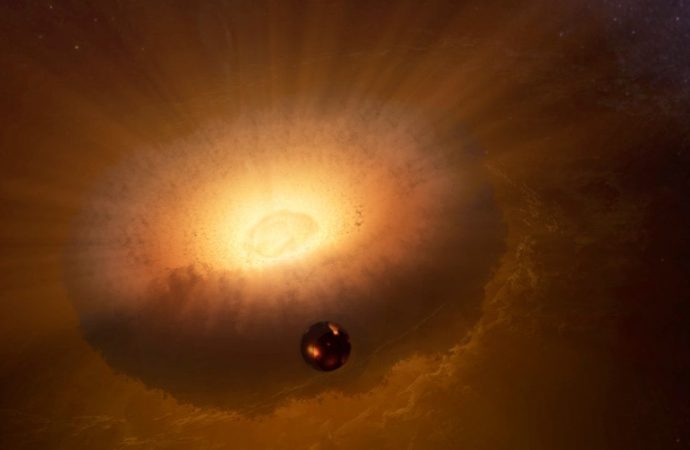A new explanation for the moon’s origin suggests it actually formed inside our Earth – when our planet was still a seething, spinning cloud of rock, shaped like a doughnut. Previously, scientists believed that the moon formed as a result of a glancing blow between the early Earth and a Mars-size body, commonly called Theia.
A new explanation for the moon’s origin suggests it actually formed inside our Earth – when our planet was still a seething, spinning cloud of rock, shaped like a doughnut.
Previously, scientists believed that the moon formed as a result of a glancing blow between the early Earth and a Mars-size body, commonly called Theia.
According to the model, the collision between Earth and Theia threw molten rock and metal into orbit that collided together to make the moon.
The new theory relies instead on a synestia, a new type of planetary object, say the UC Davis researchers.

A synestia forms when a collision between planet-sized objects results in a rapidly spinning mass of molten and vaporized rock with part of the body in orbit around itself – like a doughnut of vapourised rock.
Synestias likely don’t last long — perhaps only hundreds of years. They shrink rapidly as they radiate heat, causing rock vapor to condense into liquid, finally collapsing into a molten planet.
‘Our model starts with a collision that forms a synestia,’ Lock said. ‘The moon forms inside the vaporized Earth at temperatures of four to six thousand degrees Fahrenheit and pressures of tens of atmospheres.’
‘The new work explains features of the moon that are hard to resolve with current ideas,’ said Sarah Stewart, professor of earth and planetary sciences at UC Davis.
‘The moon is chemically almost the same as the Earth, but with some differences,’ she said. ‘This is the first model that can match the pattern of the moon’s composition.’
Source: Yahoo News

































Leave a Comment
You must be logged in to post a comment.